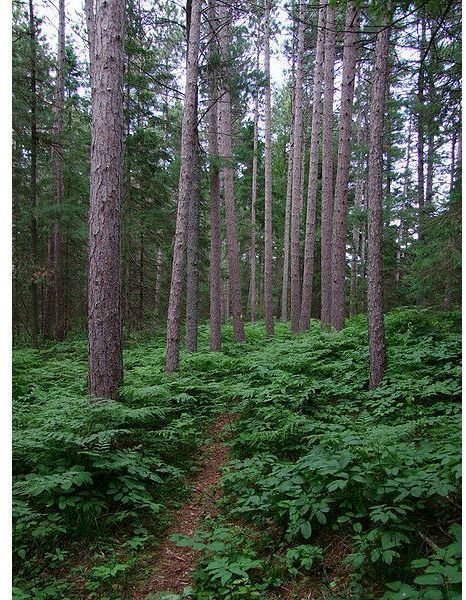Terrestrial Ecosystems: What Are They?
What are Terrestrial Ecosystems?
An ecosystem refers to the interrelation of biotic and abiotic factors. In simpler terms, an ecosystem is an entity where living organisms interact with the physical environment. It is an area where physical objects (such as soil, rock, water) function together with plants and animals. An ecosystem can be categorized into two major types: aquatic ecosystems and terrestrial ecosystems. Aquatic ecosystems generally refer to interaction of living and non-living entities in lakes, streams, marshes and ponds. But, what are terrestrial ecosystems? How do they differ from aquatic ecosystems?
The key to the meaning of terrestrial ecosystems lies in the word “terrestrial”, which generally means anything occurring on land. Therefore, terrestrial ecosystem refers to the interaction between living organisms and non-living objects occurring on land masses of islands and continents. They differ from aquatic ecosystems because of lower importance to water, which is a major part in aquatic ecosystems. The Earth’s surface comprises of 28 percent (approximately 55,000,000 square miles) of terrestrial ecosystems.
In terrestrial ecosystems, major categories of life forms include birds (Aves) with over 8,000 species, mammals (Mammalia) with approximately 4,000 species and insects with approximately 900,000 species. Plant categories include flowering plants (Magnoliophyta) with around 275,000 species, mosses with around 24,000 species and conifers with around 500 species.
Classification of Terrestrial Ecosystems
After learning “what are terrestrial ecosystems”, it is also important to learn more about major terrestrial ecosystem groupings. Terrestrial ecosystems are classified into several types. Major groupings include:
Grassland (Temperate and Savannah): A terrestrial ecosystem that consists of prairies or meadows. Temperate grasslands are found in the prairies in North America, the Pampas in South America, the Steppes in Central Asia, the Murray-Darling Basin in Australia and the Veld in Africa. The summer season on temperate grassland is warm and humid. The climate is cooler than savannahs with an average temperature of 18 degree Celsius in summer and 10 degree Celsius in winter. Numerous animals including deer, saiga antelopes, gophers, wild dogs and bisons are found in the temperate grasslands.
Savannah or tropical grassland is the area located in the interior part of major continents like Australia, South America and Africa. The climate is warm throughout the year with rainfall occurring only in summer season. This terrestrial ecosystem has scattered trees. Animals such as lions, cheetahs, hyenas, zebras, buffalos as well as giraffes and elephants are found in this area.
Chaparral: the Chaparral areas are mainly found in western North America, southwestern Australia, southern tip of South America. The vegetation mainly consists of spiny shrubs with waxy evergreen leaves.
Temperate and Tropical Forests: Temperate forests are found between the polar and tropical regions in Northern and Southern hemispheres. With a moderate climate, temperate forests can be classified into deciduous, coniferous and broadleaved evergreen forests. These tree types serve as basis for classification. Temperate forests are home to many animal species, including mountain lions, bears, rabbits, giant pandas (endangered species in China), kookaburras (Australia) rabbits etc.
Tropical forests are found near the equator. The distinct characteristic of tropical forest is the absence of winter and presence of only rainy and dry seasons. Tropical forests are divided into two major groups: tropical rainforests and tropical deciduous forests.
Deserts: These are areas where vegetation is sparse and rainfall occurs less than 30 cm per year. Deserts occur in the interior of the continents and are found between 25 to 40 degree north and south latitude. Major plants include shrubs that have resistance to droughts. These include sagebrush and cactus. The major fauna in deserts include desert lizards and snakes.
References
https://www.eoearth.org/article/Forest_biome#Tropical_Forest
https://www.physicalgeography.net/fundamentals/9k.html
https://www-usr.rider.edu/~husch/env100ecosystems4notes.htm
https://www.globio.org/glossopedia/article.aspx?art_id=3
https://animaldiversity.ummz.umich.edu/site/teach/habitat_descriptions.html
library.thinkquest.org/26634/grass/temperate.htm
Sci-Tech Encyclopedia, 5th edition, McGraw-Hill Companies, Inc.
Image Reference: A Photograph of a Forest Habitat, Photo Courtesy: W-Van (Wikimedia Commons), Creative Commons Attribution-Share Alike 3.0 Unported
This post is part of the series: All About Ecosystems
In this series of articles, you will learn all about ecosystems-what they are, what types exist, and how they differ from one another.
